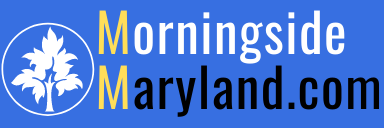The announcement didn’t arrive on a neon stage. It landed the way most serious capital commitments do—plain, dated, and pointed. Lisk has set aside $15 million for an EMpower Fund aimed at founders building real products in markets that usually get spreadsheeted as “emerging” and then told to wait their turn. Africa is spelled out as a priority, but the brief is wider: infrastructure, consumer finance, gaming rails, identity layers—anything that makes crypto feel less like a pitch and more like a tool.
The money, unglossed
Fifteen million doesn’t win an arms race. It does something more useful at seed and pre‑seed: it buys time. Enough to hire an extra engineer who understands latency in Lagos on a Tuesday, or to fund a six‑month pilot with a cooperative in Mombasa that wants payments to settle when the fish are still on ice. Lisk’s framing reads like a bet on traction over TED talks—checks sized to reward shipping, not slogans.
The structure matters. Expect staged tranches, clear milestones, and an operator’s eye for the unglamorous: compliance scaffolding, mobile UX that survives patchy networks, treasury hygiene that won’t crumble at the first depeg rumor. Grants where it makes sense, equity or token warrants where long‑term alignment is the point.
Why Africa (and the global south, writ large)
Because the use cases are loud there. Cross‑border payments that don’t insult intent with fees and delays. Merchant rails that don’t need twelve PDF contracts to accept money. Savings that hold value across weekends. Identity primitives that ride SIM cards and work in a feature‑phone world. These aren’t future markets; they’re present tense. Builders in Nairobi, Accra, Kigali, and Cape Town aren’t begging for permission from legacy rails—they’re replacing them, one small merchant and one remittance corridor at a time.
What will actually get funded?
- Payments and wallets that price in reality: sub‑cent fees, offline resilience, multi‑currency by default, and on/off‑ramps that speak M‑Pesa, MoMo, and bank agents without drama.
- DePIN with receipts: community‑owned connectivity, compute, or data capture that pays operators on time and stands up to fraud—proofs first, payouts after.
- Identity that respects context: reusable KYC with privacy by design, verifiable credentials that don’t leak, and UX that doesn’t assume everyone reads English or taps like a Silicon Valley PM.
- Market rails: tokenized T‑bills for treasury, stablecoin‑native invoicing, and credit rails that can price risk without a central office in a different time zone.
The selection filter, in plain speech
- Real users now: pilots with living, breathing cohorts beat decks with ten market maps.
- Latency humility: apps that load on rough networks and fail soft when the signal flickers.
- Local partners: cooperatives, NGOs with scar tissue, mobile‑money agents who know every alley on the route home.
- Compliance that fits: risk programs that keep regulators from waking up angry without burying the product in PDFs.
- A liquidity plan: tokens aren’t revenue; revenue is revenue. And stable, boring cash flow beats hype every day of the week.
How could this matter beyond the checks
Capital is the headline; distribution is the multiplier. If Lisk pairs the fund with an operator guild—weekly office hours, pathways into exchanges and wallets, a short list of auditors who price fairly for small teams—good projects get a tailwind money alone can’t buy. If it publishes a public playbook (what works in cash‑in/cash‑out, what breaks under monsoon rains, which fee paths users tolerate), the learnings compound for the next cohort. The best funds are libraries with wire instructions attached.
The feel in the room
Talk to founders in these markets, and the sensory details repeat. Heat rising off a matatu roof while debugging a payments flow on a borrowed laptop. The fried‑battery smell from a generator kicking in mid‑demo. A shopkeeper’s eyes when a day’s take shows up in a wallet before sundown and doesn’t evaporate by Monday. The distance between “crypto” and “useful” shrinks when the product meets that air.
The watchlist for the next 12 months
- First 10 investments: sector mix, country spread, and female‑founded teams in the set.
- Distribution partners: telcos, agent networks, and local banks that cut integration time from months to weeks.
- Regulatory posture: MOUs, sandbox entries, and a compliance toolkit founders can copy‑paste.
- Follow‑ons and exits: proof that the pipeline doesn’t end at seed—Series A co‑leads, regional growth capital, and, yes, the occasional dignified acqui‑hire.
Not every fund needs to be a moonshot. Some need to be bridges—across currencies, across connectivity gaps, across skepticism that “Web3” can pay for groceries and electricity without a sermon. Fifteen million won’t fix a continent. It can, if wielded with care, buy just enough runway for the builders who are already fixing the small, daily frictions that make financial life harder than it should be. That’s not a press release. That’s a job description. And it’s overdue.







